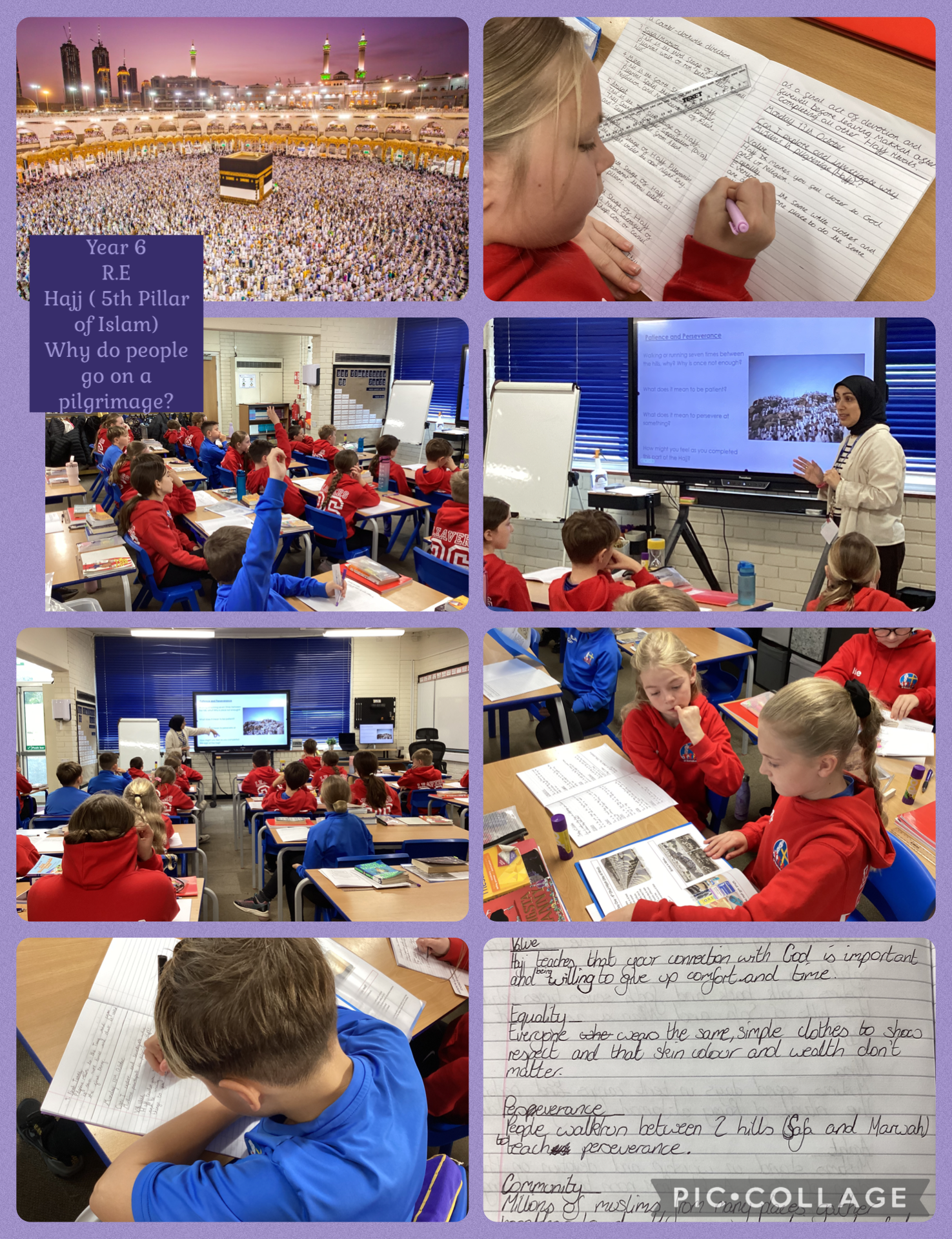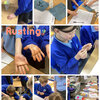
Today in Year 6, Miss Kachwalla taught a R.E. lesson about Hajj.
As someone who has personally experienced Hajj, Miss Kachwalla shared her knowledge and reflections to help the children understand the importance of pilgrimage in Islam.
The lesson began with the key question: “Why do people go on a pilgrimage?” The children shared many thoughtful responses, such as:
People go to feel closer to God.
It’s a way to express gratitude to God for everything He has given us.
Pilgrimages help people to forgive others and start again.
People go to remember important stories from their religion.
It’s a special journey that helps you think about your faith.
Year 6 then had an opportunity to ask Miss Kachwalla questions about her own experience. They were curious and engaged, asking things like:
Why do people wear white clothes during Hajj?
Why do Muslims have to go on Hajj?
What happens when you get there?
Miss Kachwalla explained that women have the freedom to wear any modest, loose-fitting clothing that is not white, but many still choose white or light colours for comfort and to symbolise purity. Men wear white on Hajj to symbolise equality, as the simple, unstitched cloth called Ihram removes signs of wealth and status, making everyone look the same before God. The white colour also represents purity and cleanliness, reflects the simplicity of life and death, and can offer a practical benefit by keeping the body cool in the heat.
After all, it is one of the Five Pillars of Islam, a key act of faith and obedience to God. She described the experience as deeply spiritual, with people from all over the world coming together on the same day to worship, pray, and celebrate their shared faith.
The children learned that Hajj is a joyful and humbling experience, a time of unity, reflection, and devotion. It was a truly inspiring lesson that helped the class understand the deeper meaning of pilgrimage and the strength of faith that connects people across the world.

